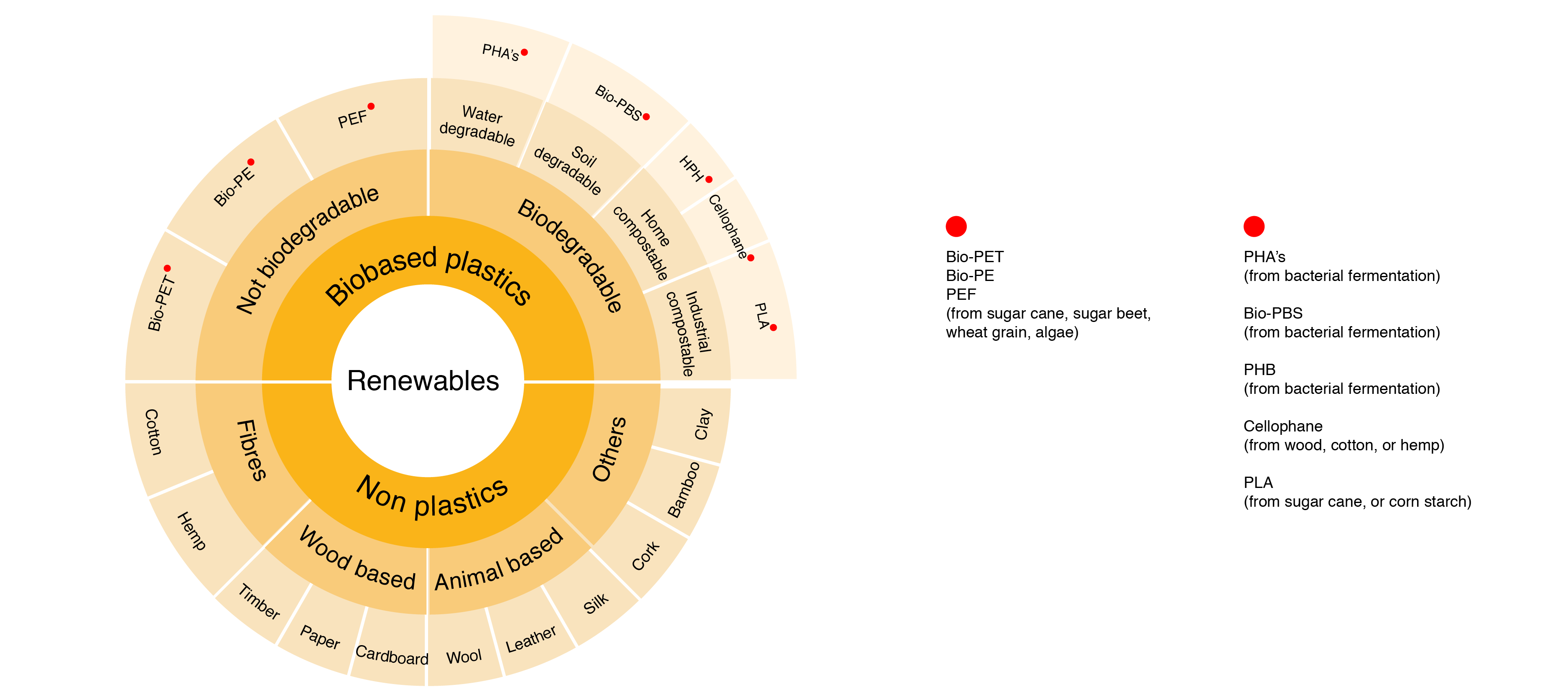3.2.3 A Few more definitions
Course subject(s)
Module 3. Renewables in packaging
In the previous video Christiaan Bolck discussed biodegradability and composting. We define these concepts as follows [1]:
Biodegradability
A material can be regarded as biodegradable when it can be broken down by living organisms into biomass, water and natural occurring gasses (such as methane and carbon dioxide).
Compostable (at home/ industrial)
Composting is biodegradation in composting conditions. This means that the material is broken down by microorganisms in certain conditions (temperature, humidity, presence of oxygen) in a certain time without negatively influencing the quality of the compost. This can either be done in a conventional compost heap, making it home compostable, or only specifically in an industrial composting facility with higher temperatures, more humidity, and more oxygen.

The materials shown in this diagram are just a selection of some of the renewables that can be used for packaging. This just serves to give you an impression of the wide range of materials that classify as renewable. Biodegradability of biobased plastics vary widely based on methods of production and combination of polymers. This diagram indicates the general degradation properties of the named materials. You can click on the image to enlarge it in a new window.
Further reading
[1] Van den Oever, M., Molenveld, K., Van der Zee, M., & Bos, H. (2017). Bio-based and biodegradable plastics – Facts and Figures.

Sustainable Packaging in a Circular Economy by TU Delft OpenCourseWare is licensed under a Creative Commons Attribution-NonCommercial-ShareAlike 4.0 International License.
Based on a work at https://online-learning.tudelft.nl/courses/sustainable-packaging-in-a-circular-economy/.



